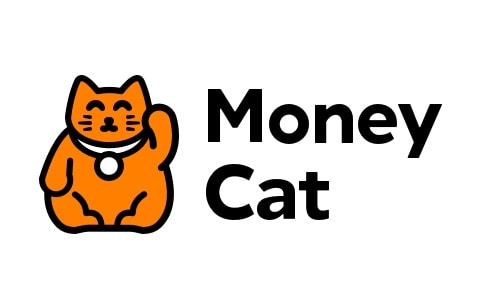A considerable part of the Filipino population is either unbanked or underbanked. This means many of our countrymen don’t have access to banking solutions, including loans. One reason it’s difficult for many Pinoys to get approved for loans because they don’t know how to increase credit scores in the Philippines.
Benefits of a Good Credit Score

There are numerous benefits to obtaining and maintaining your credit score as a Filipino. These advantages include:
- Easier access to loans
The average Filipino will have difficulty obtaining financing from traditional venues like banks. That’s because not all Filipinos have been taught to build good credit scores in the Philippines, and almost everyone has a zero score. Banks approve applications based on risk. For them, a person with no credit score might have no experience managing loans or cannot afford to settle one.
- Cheaper loans
Not only will banks and financial institutions approve you for loans with good credit, but they will also give you lower interest rates. This means more affordable monthly amortizations. This has a snowball effect on your credit score. With lower monthly payments, you can pay off your loan quickly and increase your credit score.
- Exclusive perks
Banks have a way of rewarding individuals who maintain a good standing record. These perks include discounts at partner merchants and occasional freebies. You may even get an upgrade to your credit card!
Now that you understand how beneficial it is to build your credit score in the Philippines, it’s time to find out what you should do to achieve that goal.
Ways of Building Good Credit Scores in the Philippines

Below are a few tips to remember if you want to increase your credit scores in the Philippines.
Apply for Multiple Credit Cards
There are multiple benefits to having more than one credit card. The most obvious advantage is the higher credit limit when both cards’ lines are combined. Maintaining more than one card gives you access to more credit whenever needed. If managed right, you’ll never run out of usable credit. This can be your lifeline when you encounter emergencies in the future.
On the other hand, demonstrating the capability to maintain multiple cards and keep up with the monthly payments tells other financial institutions that you are eligible for additional credit. It could also increase your credit score. Aside from that, banks that issue credit cards submit their credit reports on you to the credit companies in the Philippines. This could help you quickly get approved for loans and revolving credit lines.
However, having multiple credit cards can be a dual-edged sword. It may be challenging to keep up with the monthly statements and plan your payments accordingly. However, there are ways to get around these hurdles, including:
- Listing down monthly obligations on Notepad
- Building an Excel file to tabulate monthly expenses, including credit card dues and due dates
- Using an app to manage your costs and create alerts
Pay Double per Month When You Can and Exceed Your Minimum
Every month, the credit card company gives you a date on which you’ll settle your dues. It also gives you a minimum amount due as an option if you cannot afford to pay the total amount owed. Most people will settle for this scaled-down amortization to save money, but it is actually detrimental if you want to increase your credit score in the Philippines.
Sticking to the minimum amount due prolongs your debt with the credit card company and sends a wrong message to the issuer. Trying to keep your monthly payments low gives the impression that you are not prioritizing your credit payments. Worse, it could make them think you cannot afford to repay your used credit quickly.
If you can, allocate money each payroll period to pay your credit card bills. You get closer to paying off your used credit, which frees up some resources you could use in an emergency. It also shows the credit card companies that you’re a ‘serious’ payer who wants to increase your credit score in the Philippines.
Keep Yourself Within the Limits
Cashless payments are the norm these days, a fact highlighted well during the pandemic’s early quarantine periods. There’s a convenience to just swiping or tapping a plastic card to settle transactions. You need not fumble in your bag for cash and loose change. All it takes is for the cashier to take your card and run it through the reader to close the sale. It’s all done in a few minutes.
The downside to this is the fact that you could lose yourself using the card to make purchases. If you’re not the sort to check your balance through an app, you could max out your card without realizing it. In other words, you could end up with a debt you find difficult to settle favorably. Hence, it’s important to stick within your limits, not your credit card.
A good rule of thumb is to keep sixty to seventy percent of your credit card limit available at all times. 30% is manageable and within your financial capability to repay in a short time.
To the credit issuer, sticking to 30% shows that you are wise in managing your finances and that you keep to thresholds that you can afford to pay. This will keep your credit scores in the Philippines positive and could increase them in the future.
Never Borrow More Than What You Need
Filipinos have this habit of borrowing money plus a little extra if they can get away with it. For instance, they’d borrow PHP70,000 even if they only need PHP65,000 because they want to keep the extra PHP5,000. It’s like receiving free money, which you’ll have to repay starting from the first month.
Unfortunately, that extra PHP5,000 will figure into your total contract. It will raise expenses considerably, especially when expensive interest rates are involved. For instance, if the loan charges 10% interest per month, that PHP5,000 you included will mean an additional PHP500 on your monthly repayment.
It’s good if you can afford the monthly terms and still have some extra left. However, if you’re only breaking even, that additional PHP500 monthly could have been used for something more substantial. When you encounter an emergency and divert that PHP500, you could be in trouble with your debtor, which could also affect your credit rating in the Philippines.
Take Advantage of Loan Apps
Loan apps in the Philippines can help you build your credit score. These services let you borrow money with just your mobile device, Internet connection, and a valid ID. Borrowing amounts may vary, with some offering up to PHP5,000 for a start. They will assess you for eligibility, but credit score is not a factor for some apps. However, they do report to the credit bureaus.
Make sure to stick to your payment schedules or make advance payments whenever possible. You should stick only to the best loan apps in the Philippines – they are safe and fair regarding credit collection.
Conclusion
Thanks to the Internet and other related technologies, Filipinos now have a shot at building favorable credit scores in the Philippines. This is necessary since it will help them access much-needed credit when they try to start a business, for example. Of course, a good credit rating in the Philippines will need to be maintained. That’s simple – they just need to keep up with their payments and avoid borrowing when unnecessary.
First loan 0% fees 97% recommended Repayment: Up to 30 days Age: 21-70 years old Up to P25,000 Best Choice |
Interest Rate 0% at first loan 98% recommended Repayment: Up to 30 days Age: 20-65 years old Up to P20,000 Super Fast |
Waiting Time Instant Approval 95% recommended Repayment: Up to 180 days Age: 21-70 years old Up to P20,000 Best Loan |






